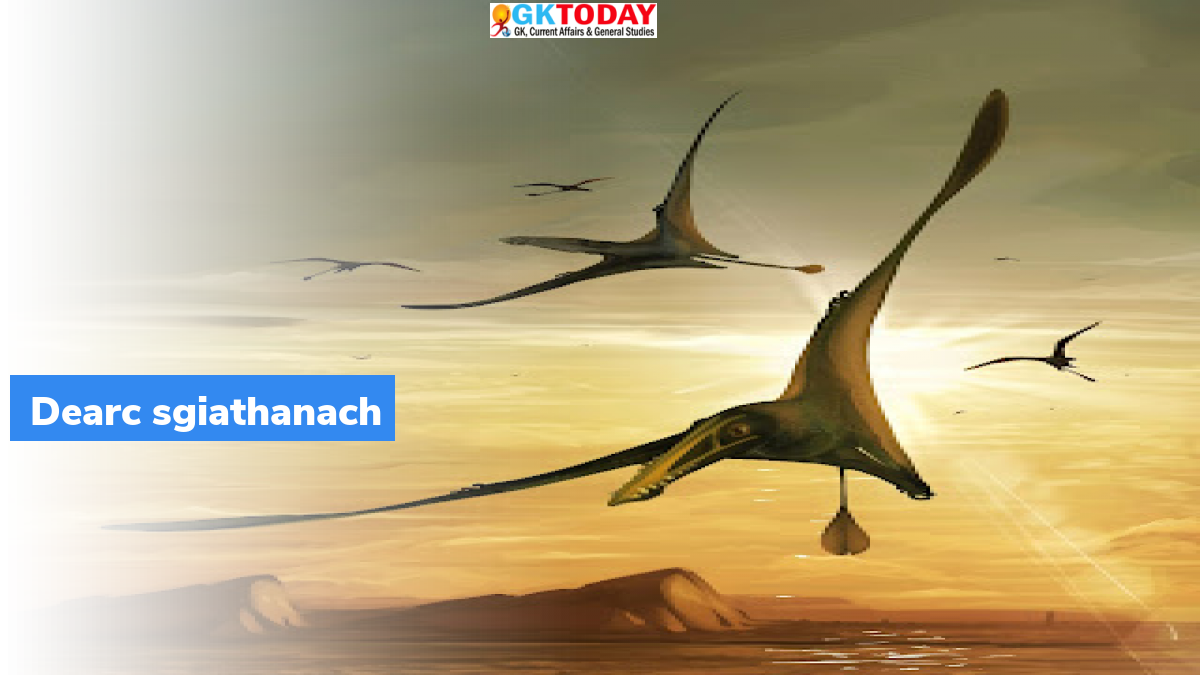Dearc sgiathanach: New Species of Pterosaur
Researchers have discovered new species of Pterosaurs, who were the first vertebrates to evolve flight. The species include the largest flying animals in history of Earth.
Key Facts
- Some of the last-surviving species were of the size of airplanes.
- Pterosaurs were earlier thought to be restricted to small body sizes with wingspans of 1.6-1.8 m, from Triassic origins to throughout Jurassic period.
- But the newly-discovered species named “Dearc sgiathanach”, is the largest Jurassic Pterosaur yet known. Its bones and skull are the longest of any other Jurassic specimens.
About Dearc Sgiathanach
Dearc Sgiathanach is the flying reptile, with wingspans of over 2.5 m or perhaps larger over 3 m. It belonged to a group of early pterosaurs called Rhamphorhynchidae and lived around 170 million years ago. It is the biggest pterosaur known from the Jurassic period.
Who discovered the skeleton?
Spectacularly preserved skeleton of the new species was discovered by team member Amelia Penny in 2017 at Rubha nam Brathairean on the Isle of Skye, Scotland. It is the best-preserved skeleton of a pterosaur ever found in Scotland. Pterosaurs preserved in such quality are rare and are usually reserved to some of the rock formations in China and Brazil.
How was study conducted?
CT scans of skull of Dearc sgiathanach revealed large optic lobes, indicating that species would have had good eyesight. To achieve flight, they had hollow bones with thin bone wall. It made their remains incredibly fragile and unfit for preservation for millions of years.
About Pterosaurs
Pterosaurs were flying reptiles of extinct clade or order Pterosauria. They lived during most of the Mesozoic, that is from Late Triassic to the end of Cretaceous. They are the earliest vertebrates known to have evolved powered flight. Their wings were formed by a membrane of muscle, skin and other tissues. It was stretching from ankles to fourth finger.
Month: Current Affairs - February, 2022
Category: Environment Current Affairs • Science & Technology Current Affairs


